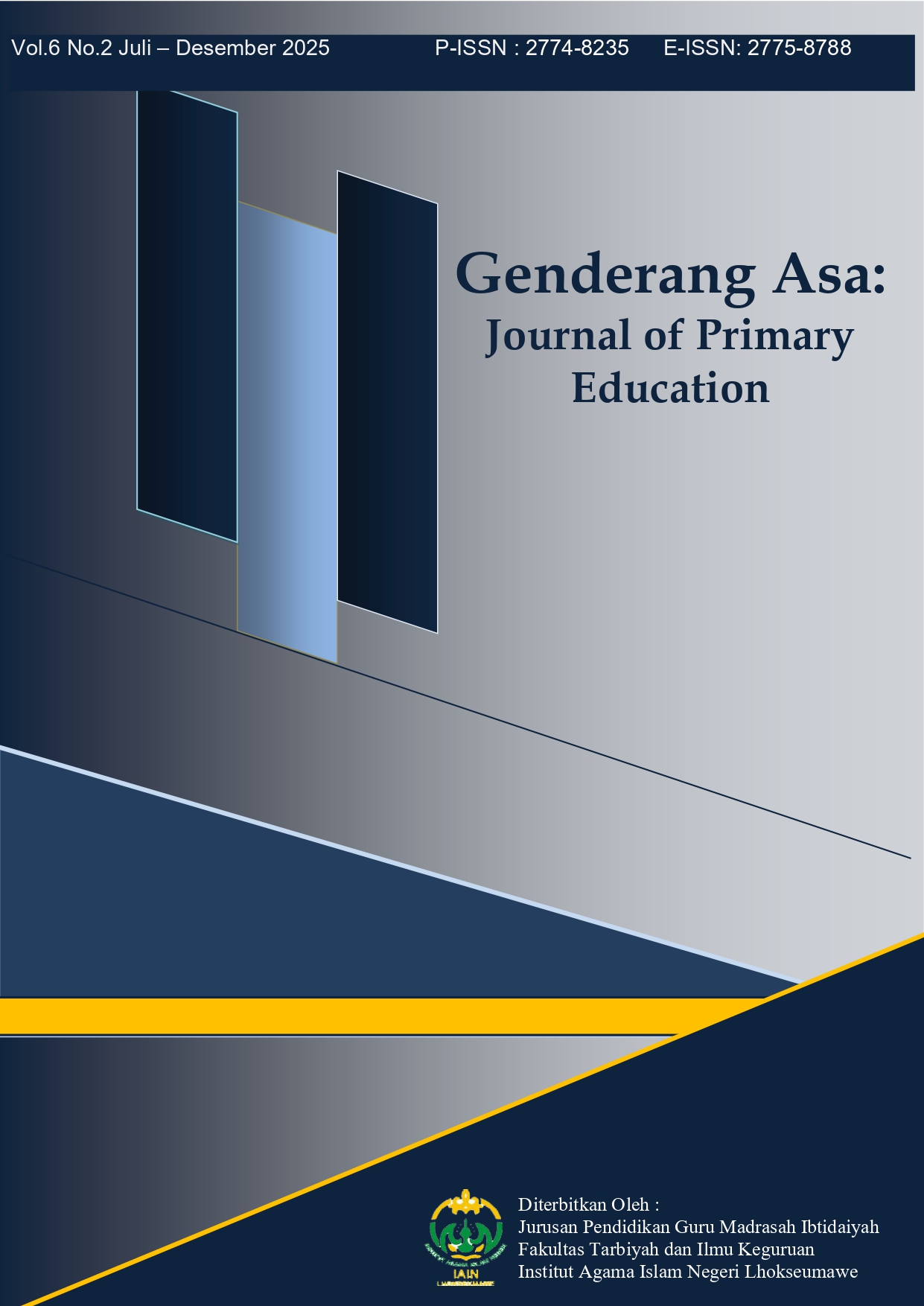Learning Analysis of Beat and Tempo Materials In Grade I Elementary School
Main Article Content
Zulpa Haerani
Resa Respati
Ahmad Mulyadiprana
This study aims to examine the process of beat and tempo learning in elementary schools. The research method used is a qualitative approach with a descriptive research type. The subjects of the study were teachers and students at an elementary school in Tasikmalaya Regency. Data collection tehnicques include interviews with teachers regarding the teaching methodes used during the learning process and observations of students during the learning activities. Data analysis was conducted by describing the results of the interviews and observations. The findings revealed that teachers still employed conventional methods in teaching beat and tempo material. The learning methods lacked variety, which affected students’ enthusiasm during the lessons. The study concluded that there are obstacles in muic learning at the elementary school level, particularly in teaching beat and tempo. As a solution, it is necessary to apply more varied teaching methods to optimize music learning in elementary schools.
Gardner, H. (1998). Is musical intelligence special?. The Choral Journal, 38(8), 23-34. https://www.cliffsnotes.com/study-notes/23860077.
Hamdani, D. (2022). The effect of the design of the learning implementation plan (RPP) on the learning interest of students majoring in automation and office management (OTKP) at SMK Negeri 1 Kadipaten. Journal of Office Management Education (JPManper), 7(2), 175–184. https://doi.org/10.17509/jpm.v7i2.46296
Indonesia, P. R. (2006). Law of the Republic of Indonesia number 20 of 2003 concerning the national education system. https://asiindoc.undana.ac.id/Home/OpenFileWithName?fileUrl=Files%5CDokumen%5C2023%5C6%5C2a01f377-a61c-46bd-8c4b-00b04e6cbf25.pdf&fileName=Appendix%204.2.%20%20UU%20No%2020%20Tahun%202023%20-%20National%20Education%20System.pdf.
Indriani, E., Desyandri, D., & Mayar, F. (2023). The Benefits of Learning Musical Arts Through Children's Songs in Increasing Student Learning Concentration in Elementary School. Pendas: Scientific Journal of Basic Education, 8(1), 2233-2242. https://doi.org/10.23969/jp.v10i03.31232.
Jarmani. (2024). The role of traditional music in the development of cognitive thinking skills of elementary school students. JOE: Journal of Education, 5(2), 95–104. https://jonedu.org/index.php/joe/article/view/6213.
Khalass, N., Zarnomitrou, G., Haque, K. I., Salmi, S., Maulini, S., Linkermann, T., Salamon, N. Z., Balint, J. T., & Bidarra, R. (2018). Musicality: A Game to Improve Musical Perception (Vol. 11385, pp. 39–48). Springer. https://doi.org/10.1007/978-3-030-11548-7_4.
Lorca, R. A. (2023). Motor and Cognitive Characteristics in Young Music Students. International Journal of Music Pedagogy, 1(1), 49–67. https://doi.org/10.61629/ijmp.v1i1.34.
Loui, P., Raine, L. B., Chaddock-Heyman, L., Kramer, A. F., & Hillman, C. H. (2019). Musical Instrument Practice Predicts White Matter Microstructure and Cognitive Abilities in Childhood. Frontiers in Psychology, 10, 1198. https://doi.org/10.3389/FPSYG.2019.01198.
Mahmudah, H. N., & Respati, R. (2022). Introduction of the Water Learning Model in Rhythm Pattern Learning. Pedagogy: Scientific Journal of Elementary School Teacher Education, 9(2), 261-270).
Nurhayati, D. U. (2019). Ki Hajar Dewantara's idea of art and music education in the Yogyakarta student park. Music, 7(1), 11-19. https://doi.org/10.24821/promusika.v7i1.3165.
Sari, A. M., Mulyana, A. R. (2023). Revised Edition of Music. Semarang: Tahta Media Grup.
Sukmadinata, N.S. 2009. Educational Research Methods. Bandung: Remaja Rosdakarya Arikunto, S. 1998. Research Procedure. Jakarta: Rineka Cipta
Suzuki Association of America. (2016). Retrieved April 27, 2016, from https://suzukiassociation.org/about/suzuki-method/shinichi-suzuki/.
Zakiyah, S., Hasibuan, N. H., Yasifa, A., Siregar, S., & Ningsih, O. W. (2024). Child Development in Elementary School. TAUGHT Journal of Education and Learning, 3(1), 71–79. https://doi.org/10.54259/diajar.v3i1.2338




